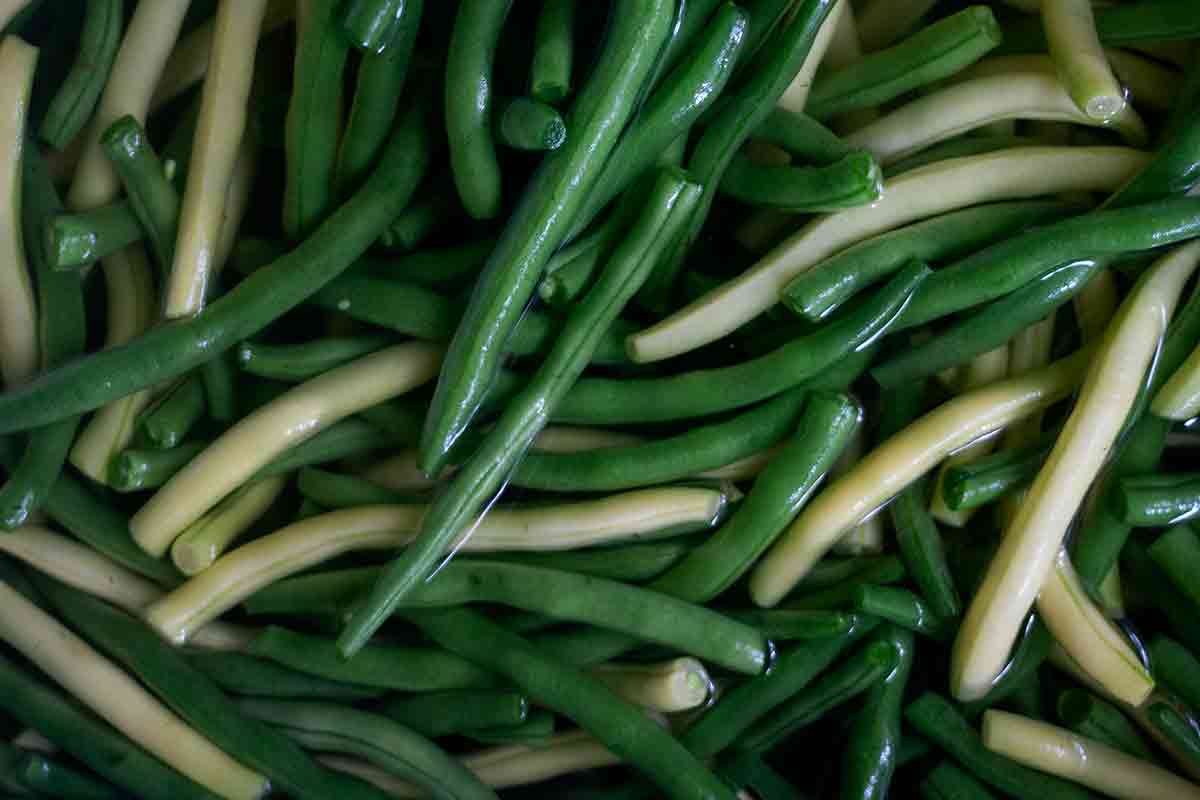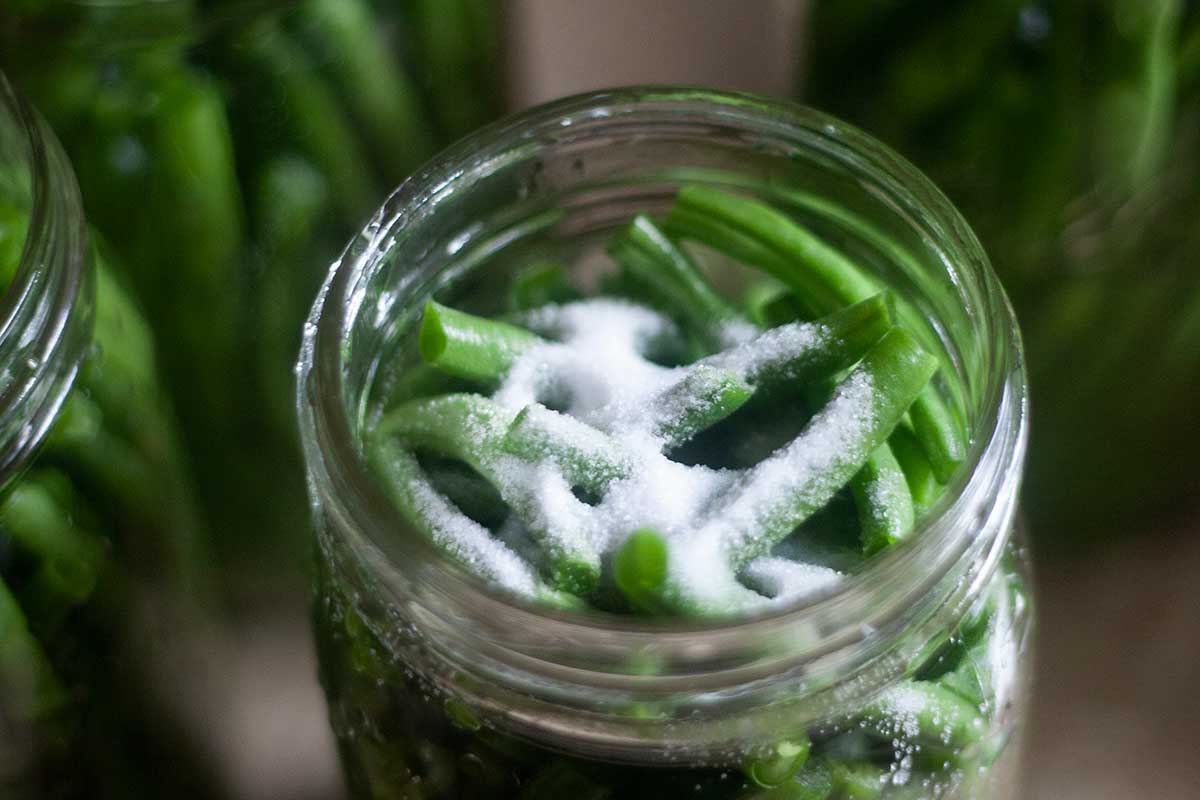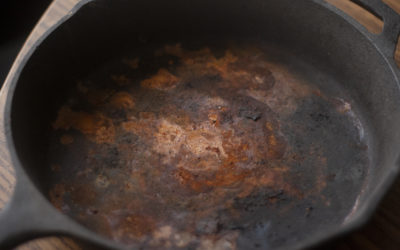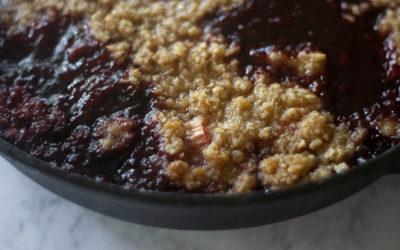Canning Green Beans
using the cold pack methodGrowing up, we regularly ate canned green beans as a part of our weeknight meals, and now as an adult it’s still our favorite go too. As one of our most consumed veggies here at Henstooth Homestead, it’s important that we grow, harvest and preserve enough to enjoy them throughout the year. Now that string bean season is upon us it’s time to get canning!
Canning green beans using the cold pack method can be a time consuming task, but over the years I’ve perfected my method to try to be as effective as possible. My favorite way to can string beans is by using the cold pack method (also referred to as the raw pack method). Cold pack, means you take your sterilized jars and place your green beans in cold/raw, then add the boiling liquid before placing them into the canner. In my experience, cold packing maximizes the amount I can preserve per jar, and for those that preserve, know that space is a precious commodity!
The alternative to cold packing is hot packing, which in short includes blanching your beans first then filling your jars with the pre-cooked beans, liquid and then pressure canning.


First, harvest your string beans (regardless of color), or purchase them from a local farm stand or market. Often times if you let your farmer know you plan to can a large quantity, they can help you get the amount you’d like and may even give you bulk pricing.
To start I fill my sink full of cold water. After trimming both ends, I drop them into the water to remove any dirt and debris.
TIP 1: Cold packing in wide-mouth jars is insanely easy compared to using standard jars. You can fit more into the jar without having to get around the lip at the top.
Once your beans are trimmed and clean, sterilize your jar and get packing! I lay the jar down on it’s side and start layering beans in, working with their irregularities to keep them as flat as possible. Think of it as a giant puzzle! Also, cold packing means you can inspect each bean individually as you pack so you can catch any debris that didn’t get washed away. It’s also a great time to spot any blemishes that may alter the quality of your product. For surface blemishes I cut the spot out, and keep canning!
TIP 2: I can specifically for my families eating habits and annual holidays. For instance, I pack 4-6 quart jars specifically for green bean casserole on Thanksgiving and Christmas. If I have enough left, I’ll can two extra jars to have on hand just in case. We have multiple family holidays, so it’s nice to be able to whip up a classic favorite on a moments notice. The rest of our jars are in pints for weeknight meals.

TIP 3: If you plan to use a mix of quart and pint jars, visually sort the longer beans out for quart jars as you pack. I don’t spend a lot of time on this part, but it does help save the step of trimming beans down to fit pint jars later on.
Once my jar is filled, I take my fingers around the outside and pull the beans in towards the center, sliding additional beans in around the outside. Sometimes it helps to use a fork or butter knife to pull the beans in.
TIP 4: It’s important to pack them in tightly. For the cold packing method, once pressure canned they will cook, shrinking them in size. So maximize that jar space in advance and try to fit as many as possible in the jar!


Now in a perfect world all of our string beans would be perfectly straight, but in a homegrown world that’s not always the case. Save the deformed or curved beans that don’t pack well for the top. I cut them if need be and tuck them in the top of the jar. For quart jars this is typically easier because you usually have a little more head space. Once tucked in I’ll take any remaining ones and lay on top making sure I’m still giving myself about 1 inch head space.
Since we grow, tend and harvest our beans I firmly believe in the mantra “no bean left behind!”.
Now from here you’ll typically want to follow your canners individual directions. I place 1 tsp of salt on top for my quart jars and ½ tsp for pints. Then fill with boiling water, remembering to allow yourself the 1 inch head space. Place your lid and tighten the band to fingertip tightness. How do you gauge this? I use my fingertips to spin the lid on, once it stops without using force to tighten further, it’s ready!
Place your jars in the pressure canner and get cooking!


BONUS CANNING GREEN BEAN FAQS
Does This Method Only Work For Green Beans?
No! Beans go by so many name variations these days. You can use string beans, bush beans, pole beans, snap beans, french beans, wax beans, etc. You can also can any color variation (Green, Yellow, Purple, Variegated). Typically when you plant beans, their description will let you know if they are good canners or better eaten fresh. You can also ask your local farmer!
Do You Keep Your Beans Whole?
Yes! Some people cut their green beans up into small pieces for canning. I would only do this if I were to hot pack. I’ve compared slicing my beans to leaving them whole, and I can get more in the jar cold packing whole beans!
How Long Do I Pressure Can String Beans For?
I highly recommend referring to your canners instructions as they may differ slightly. As a general rule, I process our green beans at 10 pounds of pressure 25 minutes for quart jar and 20 minutes for pint jars.
Do I Have To Pressure Can? Can't I Just Water Bath?
No. Vegetables with low acidity have to be pressure canned to reach a higher temperature than that can be reached by a water bath.
Do Sterilized Jars Cool Off Too Fast & Break When Cold Packing?
I’ve never had a broken jar (knock on wood), and I have a couple theories on why:
1) It’s the typically the middle of July in Michigan when canning, so the overall temperature of the kitchen is pretty high.
2) I cold pack all of my jars, add salt then top with boiling water. Letting the water sit in the jars for a few minutes warms the glass to a safe temperature before placing them in the canner.
How Long Do Canned Beans Last?
Again, the general rule of thumb is 1 year but we’ve eaten canned food that was 2 years plus in age and it tasted just as fresh as the day it was put in the jar!
Are you on Instagram? Check out our canning stories saved in our highlights, here.
Have more questions or additional tips about canning green beans using the cold pack method?
Reach out through the comments below, we’d love to hear from you!
Recently Published
How To Remove Rust From Cast Iron
I broke the holy grail of cast iron sins and let my pan rust! See how I remove minimal surface rust from cast iron for when those water + cast iron accidents happen.
Grilled Rhubarb Crisp
With spring quickly warming to summer, my oven from the 50s decided it was time to throw in the towel. I didn’t think much of it with the temperature rising outside, but then rhubarb season hit and I knew I needed to find a way to make Rhubarb Crisp, stat! So, I...
Sunflower Season
The end of sunflower season unofficially marks fall for the Henstooth Homestead. We pull our sunflowers from the garden and prepare them for roasting, a treat we’ll enjoy into the following Spring! There are a million sunflower roasting recipes out there, and they all...



